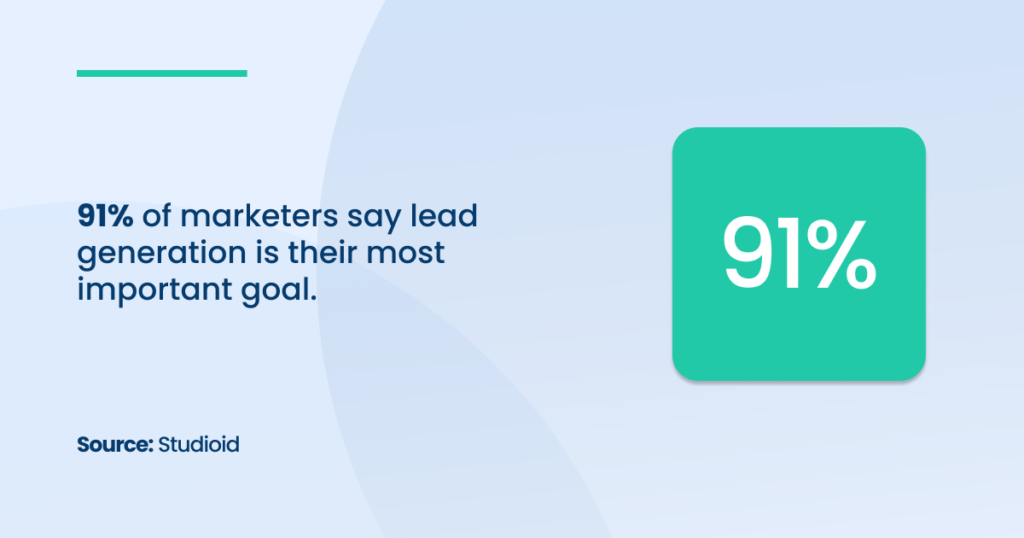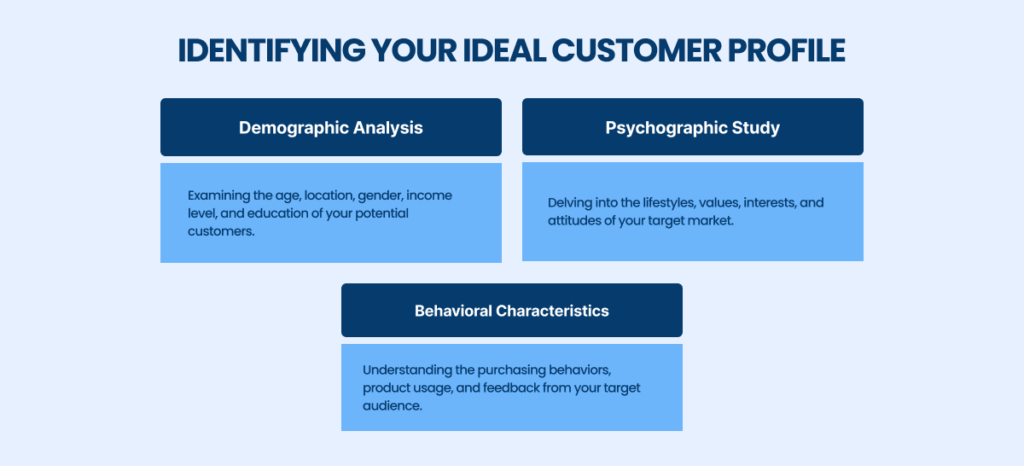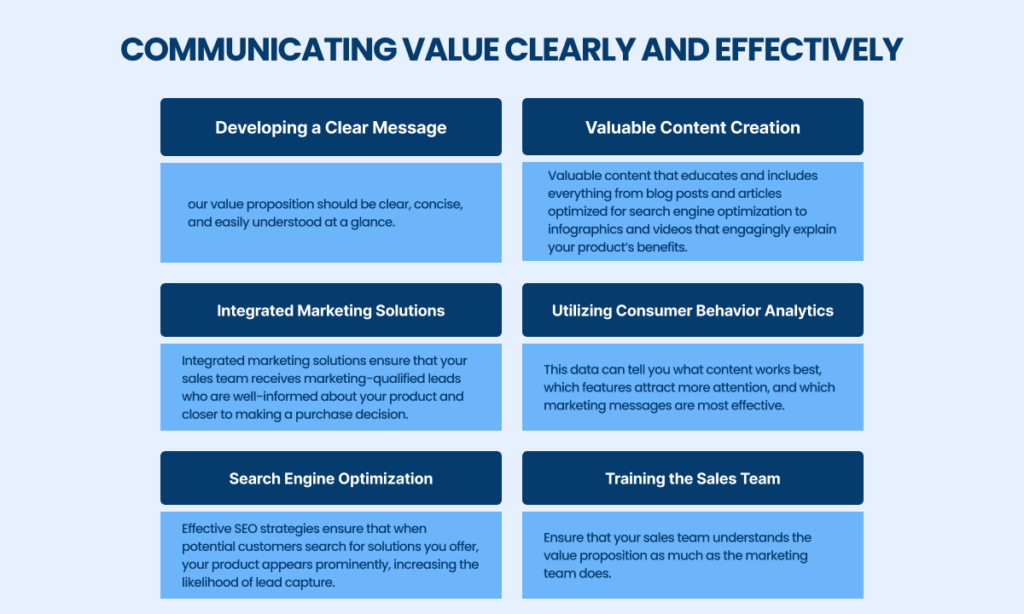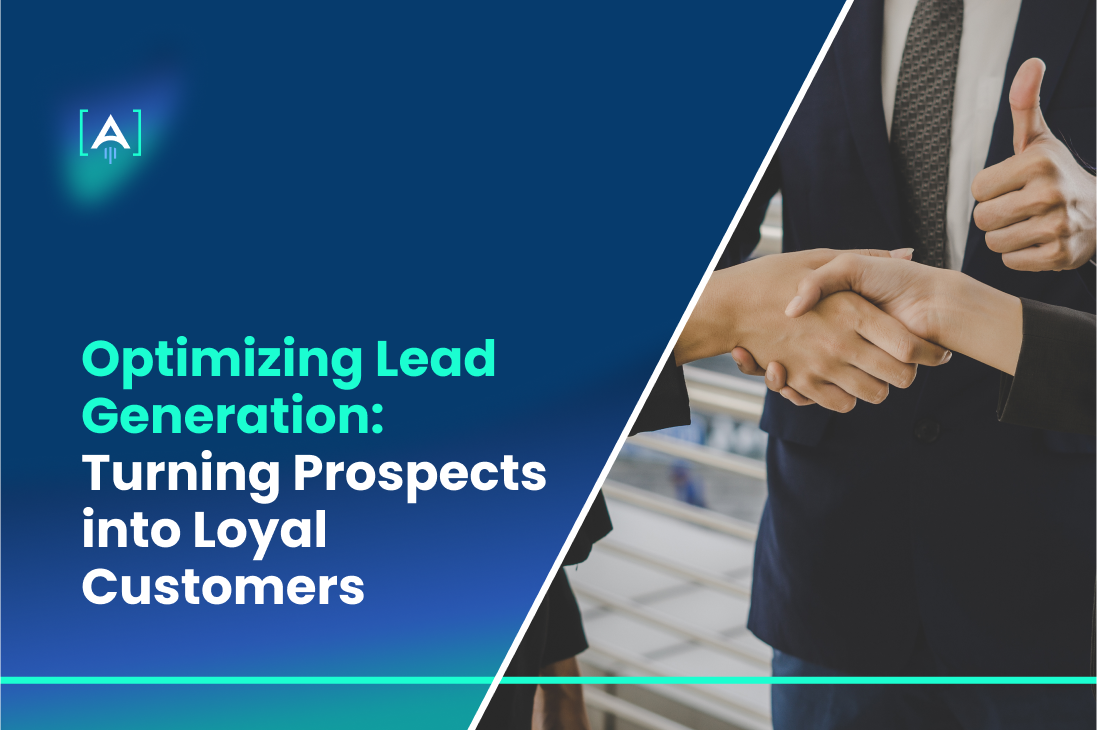Competition for attention is fiercer than ever.
The ability to generate high-quality leads is no longer just a nice-to-have. It’s a must-have.
But simply attracting prospects is not enough. The real challenge is converting these leads into loyal, long-term customers.
To achieve this, businesses must carefully nurture each lead through a personalized and engaging journey that addresses their needs and pain points.
Statista highlights that digital lead generation advertising spending in the United States was estimated at 4.6 billion U.S. dollars in 2021.
Source: Statista
Lead generation optimization is a marketing technique that draws potential customers to cultivate mailing lists and generate sales leads.
While traditionally carried out through telemarketing and trade shows, modern lead generation primarily utilizes digital channels.
Many businesses are now reaching a quality Fractional CMO Agency to strategize and enhance their digital lead generation efforts. Accordingly, without lead generation optimization, growth frequently comes to a standstill.
The blog post will clarify the art and science of optimizing lead generation and explore strategies for turning prospects into raving fans who purchase your products or services and advocate for your brand.
What is Lead Generation?
Total digital ad spending in the U.S. stood at 189 billion U.S., giving lead generation a roughly two percent share.
Accordingly, lead generation is the cornerstone of modern marketing efforts. It aims to initiate consumer interest or inquiry into a business’s products or services.
Lead generation optimization involves capturing and stimulating interest in a product or service to develop a sales pipeline.

Traditionally, this process included methods like direct mail or telemarketing. Still, with technological advancements, the strategies have evolved to encompass digital channels, making it crucial for an effective omnichannel marketing strategy.
Understanding Your Target Audience
A deep understanding of your target audience is pivotal to refining your marketing efforts and driving competitive differentiation.
Knowing your audience allows you to tailor your messaging and offerings to meet their needs and preferences. This not only helps you attract the right kind of leads but also significantly boosts the effectiveness of your lead-generation campaigns.
Identifying Your Ideal Customer Profile

Achieving Competitive Differentiation
Employing a CMO as a service or utilizing a fractional CMO agency can be particularly beneficial here, as it provides expert insights into customer profiling and sets a strong foundation for all strategic marketing decisions.
- Targeting Specific Niches: By knowing your ideal customer, you can focus your marketing efforts on niches most likely to value and need your unique offerings.
- Enhancing Customer Satisfaction and Loyalty: This targeted approach improves lead quality. It aligns your offerings with your customers’ needs, improving satisfaction and fostering loyalty.
This strategic focus ensures that your marketing messages are personalized and compelling and effectively positioned to meet your target audience’s specific needs and pain points. This leads to better competitive differentiation and improved customer relations.
Crafting Your Value Proposition
A compelling value proposition is central to effective lead generation optimization. It directly impacts your customer acquisition strategy, attracts more qualified leads, and differentiates your product in a crowded marketplace.
Defining What Makes Your Product Unique
Market Segmentation Analysis
A deep understanding of your market segments is the foundation of a strong value proposition. Market segmentation analysis helps you identify which parts of the market you can serve best and tailor your product to meet the unique needs of those segments.
Utilizing consumer behavior analytics, you can pinpoint trends, preferences, and pain points influencing purchasing decisions within each segment. This analysis is crucial for a business leveraging a fractional CMO, allowing for more precise targeting and customization of marketing efforts.
Highlighting Unique Features and Benefits
What sets your product apart from competitors? It could be anything from innovative features, superior quality, better pricing, or exceptional customer service.
Focus on these unique attributes and how they solve common customer problems. For example, if your product offers integrated marketing solutions that simplify the customer’s workflow, emphasize this as a critical differentiator.
Leveraging Expertise
Especially relevant for businesses utilizing a fractional CMO, showcasing expertise can be a significant part of your value proposition.
A fractional CMO brings a wealth of knowledge and experience from different industries and can help position your product as the best solution through sophisticated lead generation optimization strategies and robust lead nurturing systems.
Communicating Value Clearly and Effectively

Strategies for Effective Lead Capture
Effective lead capture is a critical component of lead generation optimization. It involves designing strategic touchpoints that not only attract potential customers but also encourage them to share their information, moving them further into the sales funnel.
This section explores proven strategies to enhance your lead capture process, from creating high-converting landing pages to effectively utilizing lead magnets.
Creating High-Converting Landing Pages
A landing page serves as the entry point for a marketing campaign, making its design and content pivotal for capturing leads.
43.6% of marketers identify lead generation as their primary objective, whereas 33.7% prioritize direct customer purchases as their main goal.
Source: HubSpot
The goal of a high-converting landing page is not only to attract visitors but to convert them into leads by encouraging them to take a specific action, such as signing up for a newsletter or downloading a resource.
Elements of a Successful Landing Page
- Clear and Compelling Headline: The headline is often the first thing a visitor will see and can make or break their decision to stay on the page. It should clearly state the value of what you’re offering in a concise and compelling manner.
- Engaging Subheadline: Just below the headline, the subheadline should provide additional details about the offer, further enticing the visitor to continue down the page.
- Visually Appealing Design: A clean and attractive design can significantly impact user experience and perceptions of your brand. The design should align with your brand’s identity and be visually appealing to keep visitors engaged.
- Optimized Forms: The lead capture form should be simple and straightforward, asking only for essential information to minimize barriers to entry. Form placement is also crucial; it should be positioned above the fold so that visitors do not need to scroll down to find it.
- Strong Call-to-Action (CTA): Your CTA button should stand out on the page and clearly tell visitors what they will get by clicking it. Use action-oriented, benefit-focused language.
- Trust Signals: Include elements that build trust, such as testimonials, client logos, or security badges, particularly if you’re asking for personal details.
- Responsive Design: Ensure that your landing page is optimized for all devices, particularly mobiles, as a significant portion of web traffic comes from mobile users.
A/B Testing for Optimization
A/B testing is essential to maximize the effectiveness of your landing pages.
AB Testing Software Market size was valued at USD 716.94 Million in 2024 and is projected to reach USD 1727.5 Million by 2031, growing at a CAGR of 11.62% from 2024 to 2031.
Source: Verified Market Research
This process involves creating two versions of your page (A and B), each with a different element (like a headline, image, or CTA), to see which version performs better.
- Test One Element at a Time: To accurately measure the impact of a single change, only test one element at a time.
- Use Significant Traffic: Ensure that the test receives enough traffic to produce statistically significant results.
- Measure the Right Metrics: Focus on metrics that directly relate to your objectives, such as conversion rate or click-through rate.
- Implement Changes Based on Data: Use the results of your A/B tests to make informed decisions about how to optimize your landing pages further.
Nurturing Leads to Conversion
Transforming initial leads into paying customers is a nuanced process that requires strategic nurturing.
Through the careful implementation of lead nurturing strategies, businesses can guide potential customers through the sales funnel with personalized interactions and targeted content.
This stage is critical not only for converting leads but also for optimizing overall customer acquisition costs.
Developing a Lead Nurturing Strategy
The success of converting leads into customers hinges on a robust lead-nurturing strategy.
This strategy involves a series of efforts and techniques designed to educate, inform, and engage your leads at every step of their journey from initial contact until they are ready to make a purchase.
- Understanding Your Audience: The first step in effective lead nurturing is to deeply understand your audience’s needs, preferences, and behavior.
Utilizing data-driven personalization, you can craft messages and offers that resonate with your audience, making them feel understood and valued.
- Segmentation of Leads: Not all leads are at the same stage of the buying process. It’s important to segment your leads based on their actions and engagement level.
Marketing qualified leads who have shown a higher level of interest and engagement might need a different approach compared to newer, less engaged leads.
- Tailored Content Delivery: Depending on the segment, your leads should receive content that is appropriate for their stage in the sales funnel.
For instance, early-stage leads might need more educational content to build awareness and trust, while leads closer to the purchase stage might benefit from more direct product information and special offers.
- Multi-Channel Approach: Employ various channels such as email, social media, blogs, and webinars to reach your audience. This ensures that you are present wherever your leads are looking for information or engaging with related content.
Email Marketing Campaigns
Email marketing campaigns are a pivotal component of effective digital marketing strategies, enabling businesses to directly communicate with their audiences.
According to Forbes, there are 4.48 billion email users worldwide. By sending targeted and personalized messages to a curated list of subscribers, these campaigns can nurture leads, promote engagement, and ultimately drive conversions.
Source: Forbes
The success of email marketing lies in its ability to deliver timely, relevant content tailored to individual preferences and behaviors, thereby enhancing the recipient’s experience and increasing the likelihood of achieving desired actions, such as purchases or sign-ups.
- Email Sequence Design: Design an email sequence that gradually moves leads from awareness to decision-making. Start with welcome emails, followed by newsletters, followed by targeted offers and reminders.
Each email should serve a purpose, whether it’s to educate, inform, or entice.
- Personalization: Use the data you have about your leads to personalize every email. This could be as simple as including the lead’s name in the greeting or as complex as tailoring the content based on past interactions with your website.
Personalization increases engagement rates and helps build a relationship with your leads.
- A/B Testing: Regularly test different elements of your emails, from subject lines to call-to-actions.
A/B testing helps you understand what works best for your audience, allowing you to optimize your emails for higher conversion rates.
- Lifecycle Marketing Automation: Implement lifecycle marketing automation to send the right message at the right time.
This not only saves time but also increases the relevance of your messages, improving open and click-through rates.
Personalized Content Marketing
In the realm of personalized content marketing, it’s essential to create content that is not only valuable but also optimized for search engines.
This approach ensures that the content attracts organic traffic, which can be converted into leads.
Source: Forbes
Incorporating keywords related to your products and industry enhances visibility and draws in a relevant audience. Additionally, offering educational content educates your audience about your industry and products, positioning your brand as a thought leader, and building trust.
To further engage your audience, utilizing interactive content like quizzes, surveys, and calculators is beneficial. This type of content not only captivates but also collects additional data about your leads, aiding in further personalization.
Moreover, leveraging analytics to understand content performance and lead interactions allows for the continual refinement of your content strategy to ensure the delivery of the most effective messages.
Moving onto automation and CRM tools, selecting the right marketing automation tools and CRM systems is vital for effective lead nurturing. These tools should align with your business needs and integrate seamlessly with your other marketing platforms.
Automating repetitive tasks such as email sending, social media posts, and lead scoring ensures that no lead is forgotten and that all leads are consistently nurtured through the funnel.
Ensuring your CRM system is fully integrated with your other marketing tools provides a seamless flow of information across platforms, giving a complete view of each lead’s interactions and status.
Implementing lead scoring helps prioritize and manage your leads more efficiently, enabling your sales team to focus their efforts on leads most likely to convert.
Additionally, utilizing the reporting features of your marketing automation tools and CRM to track the effectiveness of your lead nurturing efforts is crucial. Metrics such as conversion rates, click-through rates, and ROI are instrumental in measuring success and identifying areas for improvement.
By implementing these strategies and utilizing the right tools, businesses can effectively nurture their leads through the sales funnel, turning them into loyal paying customers.
This not only improves the efficiency of the lead generation optimization but also optimizes the overall customer acquisition costs.
Partner with [A] Growth Agency for Optimizing Lead Generation
In the ever-evolving world of business, the journey from prospect to customer is a delicate dance.
Understanding your target audience’s psychology, using data effectively, and focusing on customer needs can improve lead generation and turn casual browsers into loyal customers.
Remember, lead generation is not just about numbers. [A] Growth Agency will build meaningful relationships that drive long-term success.
Our experienced team specializes in turning entrepreneurial dreams into reality with effective, tailored growth strategies.
Consider we believe in the power of data to inform and drive every strategy, ensuring our actions are as effective as they are innovative.
This is not the whole we can suggest.

